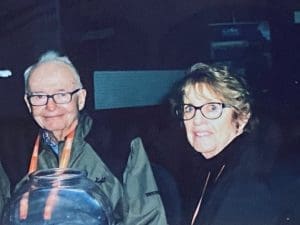
By Betty Jo Gigot Publisher
Editor’s Note: William C. (Bill) Foxley was one of the most creative and successful feeders in the history of the industry. Foxley not only built and operated the largest confinement feedyards in the business, but at one time his cattle company was the nation’s largest and was a major stockholder in Flavorland Industries, a major packer at the time.
As the cattle industry dusted itself off after the 1994 fracas, Foxley weathered the crash but Flavorland did not fare so well. As a result of the drop in their stock prices, Foxley eventually accumulated 85 percent control of the packing organization. “With sales of about $380 million, Flavorland was ranked the 495th largest company in the nation, on the basis of sales, according to Fortune magazine that year.”
Eventually Foxley took Flavorland private and merged it with Foxley & Co. By 1980, he was putting together 10,000 acres in the eastern Nebraska Sandhills, where he built a confinement feedyard near Bartlett. It was Foxley’s dream of a nearly perfect ecological system where liquid manure is spread on crops that are fed to the cattle in the yard.
The Other Side
“While developing his massive cattle empire, Bill Foxley followed another dream. ‘I have always loved art works and, as a young child, developed a love for the West.’
“In 1983 he founded the Museum of Western Art in downtown Denver. The museum is located in the historic Navarre Building across from the Brown Palace Hotel and is a showcase for the art of Western America.”
The collection was built around artists who lived or traveled extensively in the West between the Civil War and World War II.
“After starting the museum, Foxley then used his talents to write an illustrated book about the West and his collection. He dedicated the book to his father. ‘To William J. Foxley, a pioneer cattleman who was a personification of the spirit of self-reliance and optimism prevalent of the Frontier.’”
Foxley also found another art form while in Cody, Wyo. While at a gun show he saw a display of Winchester and Colt guns. He studied the subject and found out that the rarest of all American firearms were the 22 gold inlaid Colts made in the 1830s and ‘40s.
“Most were in museums like the Hermitage and Royal Norway Museum. Only eight of the 22 were in good condition and in private hands. It took about six months, but I bought seven of the eight. The one that got away was donated to the Met in New York.”
I asked him what he did after he finished the collection. “The thrill was getting it done. I have since sold some of them for three times what I paid. In the meantime, I have sold lots of steers for less than I paid.”
Final Thoughts
“I think the industry should make sure that the line of communication to the ultimate consumer is always open and that we are flexible enough to adjust, if, in fact, we do find out that the consumer is changing his or her taste for beef.” That said, he advised not reacting too quickly when some surveys said that beef was not healthy. Always a man ahead of his time.
“As Foxley winds down his career in the cattle industry he still strongly believes in the product. There is no other product as permanent as meat. Beef is not a fad. It has been here for zillions of years and as long as there is a man he will be eating steak.”
Postscript: After I did the interview I had the opportunity to stay in touch with Foxley and had a chance to visit with him when he was inducted into the Cattle Feeders Hall of Fame in 2019 in New Orleans.
A recent note from him reads: “Dear Betty Jo, many thanks for the kind words written about me in your great magazine! I was born just at the right time in a great country with free enterprise and helped along the way with super people like you.”
Next Issue: Ed Barrett – Cowboys are made, not born.






